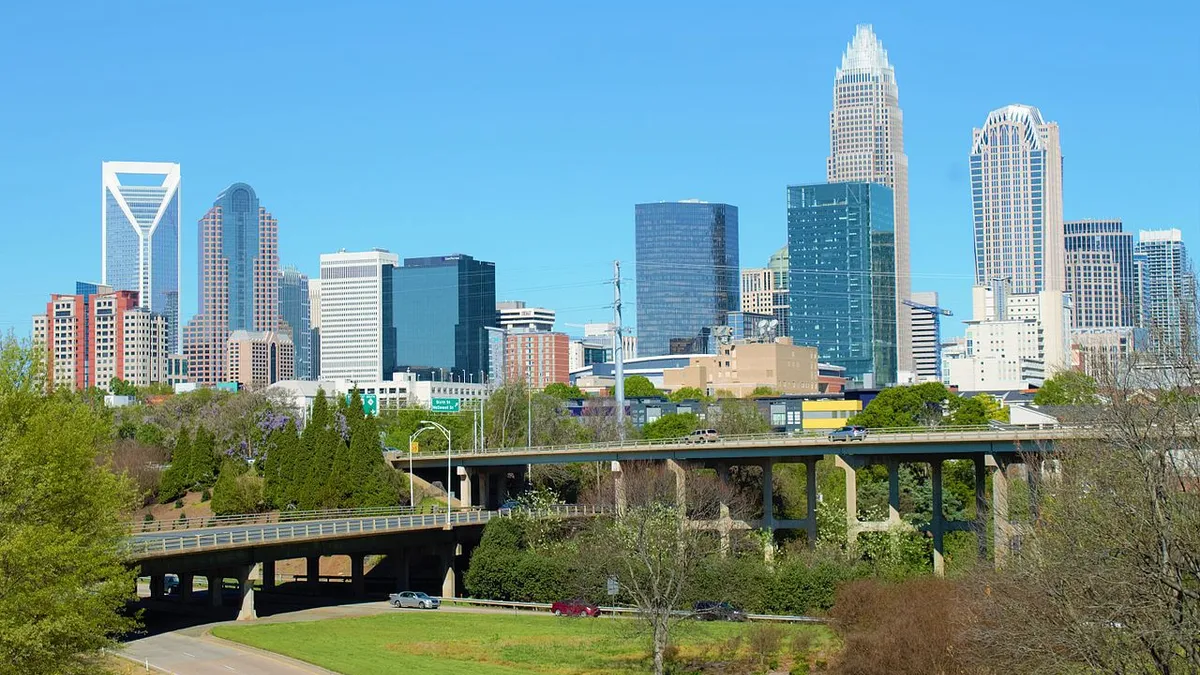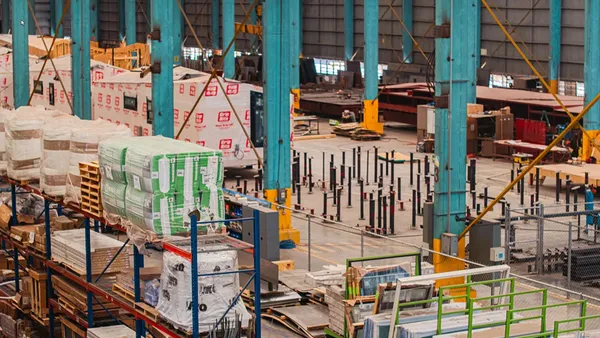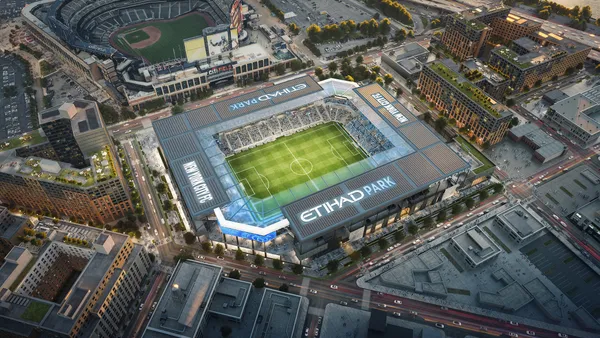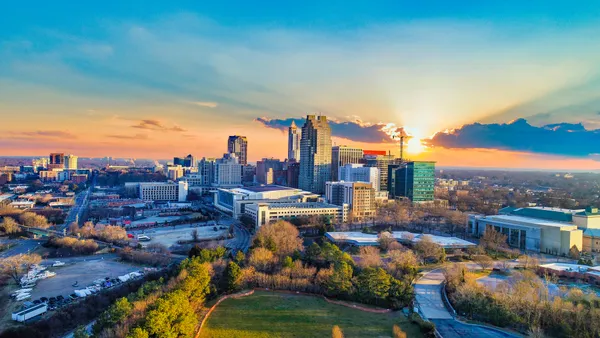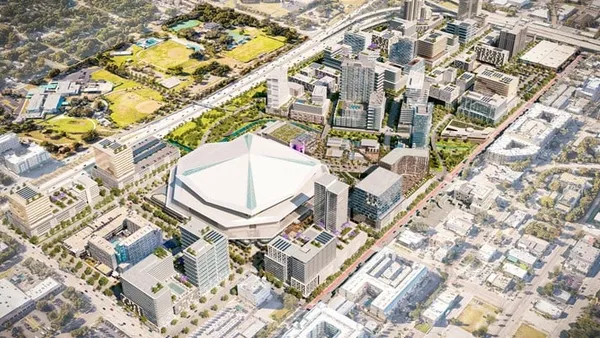Dive Brief:
- Charlotte Central City Partners, an organization that promotes economic development in the central business district of Charlotte, North Carolina, indicated in its 2019 State of the Center City report that there is $1.7 billion of construction underway in the city's urban core.
- Charlotte’s central business district is the fifth-busiest in the U.S. for office construction, the report found, with 6.9 million square feet of office space planned or being built right now. In addition, 948,000 square feet of retail, more than 2,300 hotel rooms and almost 8,500 residential units are either under construction or in planning.
- The city's thriving tech sector saw a two-year, 146% growth spurt in venture capital funding, helping to grow its coworking space inventory to almost 740,000 square feet — approximately 554,000 square feet of which is in Center City. The district's population has also grown by 46% during the last five years, which has helped make it the fastest growing apartment market in the Charlotte area.
Dive Insight:
The increase in business and residential populations in Charlotte have also resulted in an expansion of the city’s transit systems and highway modernization projects, creating work for contractors specializing in infrastructure work in addition to generating jobs for multifamily and commercial contractors.
In the fall, the North Carolina DOT tapped French company Eurovia for a $346 million toll lane project along Interstate 485 in Charlotte. Eurovia’s U.S. subsidiary Blythe Construction will add one 16.6-mile toll lane in each direction, a high-occupancy vehicle lane and 13 new bridges.
In recent weeks, Charlotte’s Metropolitan Transportation Commission (MTC) has continued to review plans for an expansion of the Charlotte Area Transit System (CATS). The agency has a $5 billion to $7 billion plan in the works that will add more light-rail lines as well as bus rapid transit service.
CATS staff made its recommendations to the MTC for the new routes, excluding a $1 billion light-rail tunnel under City Center that was previously considered. Now the commission must flesh out the plan and identify the revenue sources that will fund it.
Transportation plays a key part in developing the kind of walkable, “live-work-play” neighborhoods that many baby boomers, millennials and demographics in between desire. When the residential and commercial density around a mode of mass transportation is high enough, they’re often called transit-oriented developments (TODs). However, local government officials often need to rezone before this construction can take place.
Miami-Dade county officials, for instance, recently took the first step in allowing TODs along six transit corridors by increasing the number of allowable residential units per acre. Officials may pursue other updates to zoning regulations, such as allowing building in closer proximity to transit stations, the Miami Herald reported.


